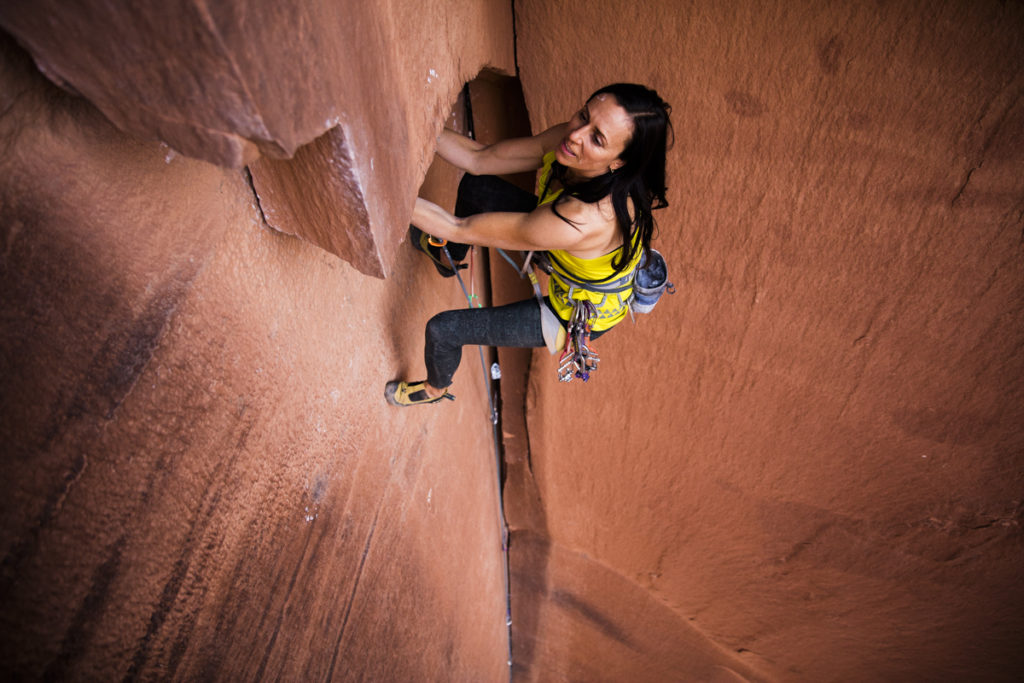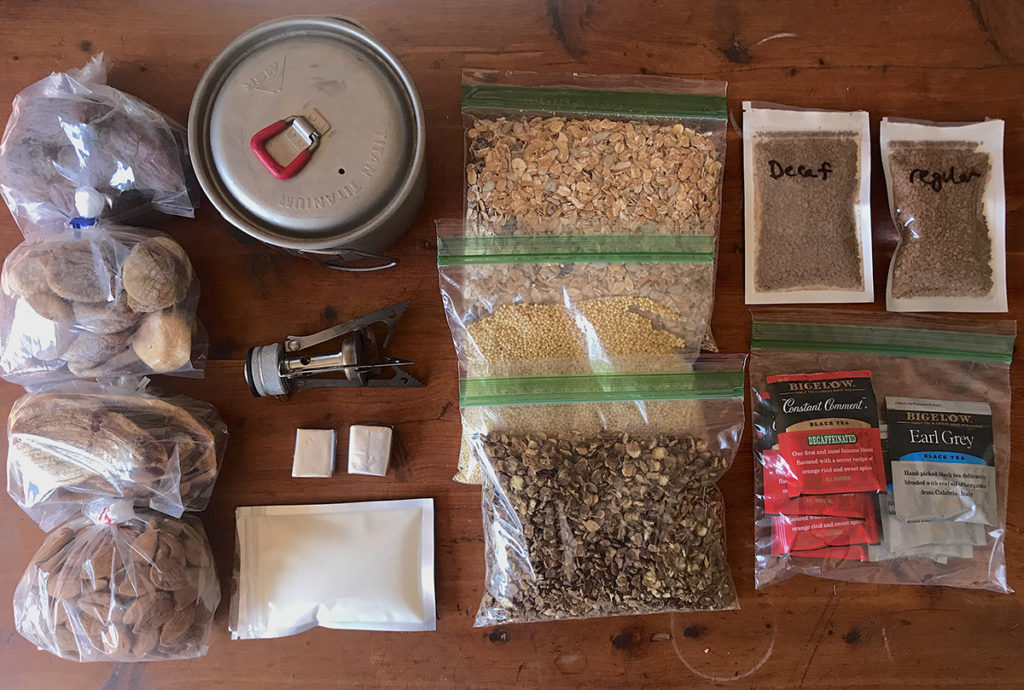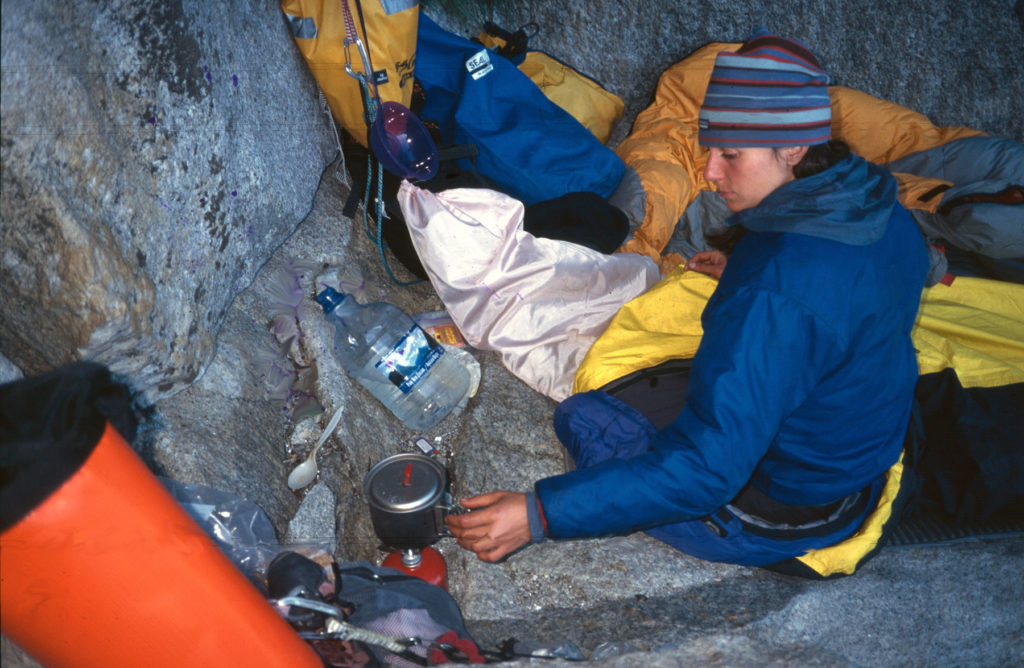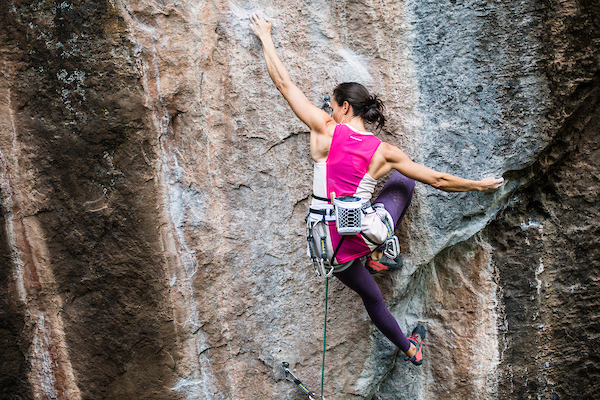Multi-Day Rock Climbing: To Stove or Not to Stove
A stove is essential in any alpine climbing kit, but it often doesn’t make it into the haulbag or climbing pack for single-day, warm-weather rock routes. But if you’re packing for a snow-free objective that requires some overnights (the Nose on El Cap, for example), should you bring a stove?

I’ve gone both ways, and both have their pros and cons. The classic big wall shopping list includes lots of canned foods—the idea being that cans are sturdy, the food inside has water already (so you don’t need to deplete your drinking water), and you can eat straight out of them with a spoon (or a nut tool, if you really want that old-school big wall experience). I remember having a specific spoon for big walls with a can opener on the handle.
The downside here is that cans are heavy, and they stay heavy after they’ve been opened up and used. You must to haul the empty cans up the side of the wall, and back down from the summit.

The modern version of cans is Tasty Bites, or any plastic/foil pouch of food. Like cans, they don’t need extra water and can be eaten straight from the package. Unlike cans, they’re not heavy when they’re empty. One downside is the waste—this type of packaging isn’t recyclable, so it can be hard to justify. They can also cause a nasty explosion, and very disappointing dinner, if they break inside your bag.
I find myself choosing to bring my lightest stove setup (PocketRocket and Titan Kettle + 4-ounce fuel can), along with baggies of dehydrated lentil and black bean soup, vegetable bouillon cubes, couscous, instant oats, instant coffee and teas, as well as snack foods like dried fruit, nuts, granola, almond butter and crackers.

All of these ingredients are available in bulk or in larger packages and you can put them into your own baggies, which you can re-use multiple times before recycling. My food bag is significantly smaller and lighter, even including the stove and fuel can. Plus, it doesn’t require much water supply to make the tea, soup or oats. You’ll be ingesting that water regardless, so it doesn’t matter how it gets in you.
Since all ingredients are “instant,” fuel use is minimal. Simply bring the water to a boil, turn the stove off immediately, add the food, and let it sit covered for 5-10 minutes. Then, eat right out of the Titan Kettle.
It’s really nice to have something warm to wake up to and drink before bed. Once the food is eaten, you have only empty plastic bags to carry up and down with you! Of course, the risk with carrying a stove is dropping it or running out of fuel or water.

In reality, there’s no single absolute answer to whether you should bring a stove. Every route, every situation is different. Still for me, the light stove kit and the light food bag are almost always my go-to for overnight climbing outings. (Just don’t forget the chocolate…)
Related Posts:
- Strength Training for Climbers: 3 Tips from Steph Davis
- Steph Davis Answers: “How Do You ‘Go’ on the Big Wall?”
- Why Rock Climbing Needs More Female Guides
 Considered a rock climbing visionary, Steph Davis is one of the world’s leading women climbers. She is also an avid BASE jumper and wingsuit pilot. Among her many accomplishments, she has completed free ascents of El Capitan, first ascents in South America, the Karakorum and the Arctic, and some of the hardest climbs worldwide. Steph lives in Moab, Utah, or sometimes out of a Honda Fit, in a tent, or in her off-the-grid octagonal cabin near Indian Creek. She is a writer, loves to cook and believes in living a simple life.
Considered a rock climbing visionary, Steph Davis is one of the world’s leading women climbers. She is also an avid BASE jumper and wingsuit pilot. Among her many accomplishments, she has completed free ascents of El Capitan, first ascents in South America, the Karakorum and the Arctic, and some of the hardest climbs worldwide. Steph lives in Moab, Utah, or sometimes out of a Honda Fit, in a tent, or in her off-the-grid octagonal cabin near Indian Creek. She is a writer, loves to cook and believes in living a simple life.
